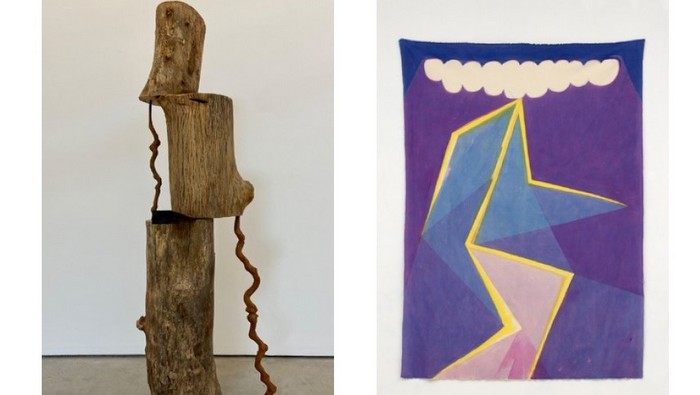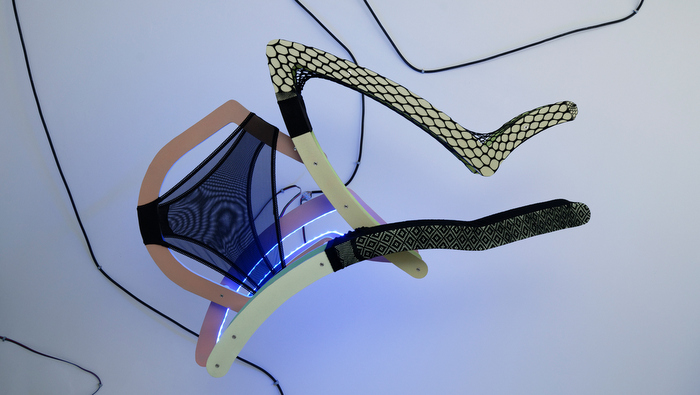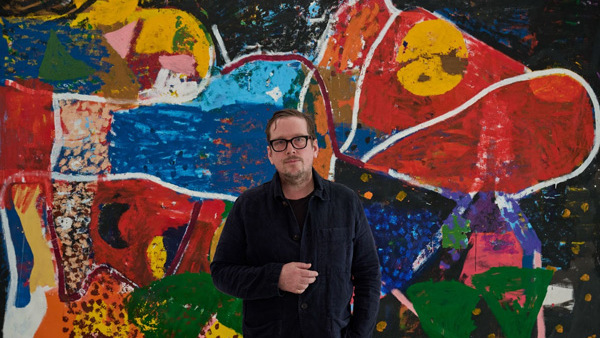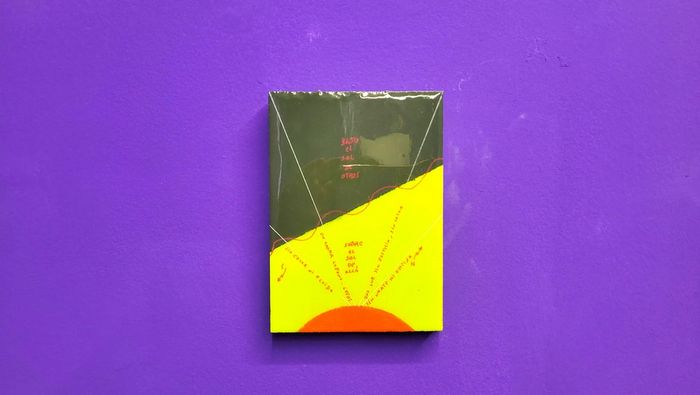Luciana Brito Galeria is kicking off its 2023 programming with two solo shows. The newest addition to the gallery’s roster of represented artists, Afonso Tostes, is holding his first exhibition at the gallery, titled Ajuntamentos [Joinings], featuring a group of new works. Meanwhile, in the Modernist Room, the gallery is presenting Pince-nez, the first solo show in Brazil by Portuguese artist André Sousa, as part of its Visiting Artist program.
“Ajuntamentos” - Afonso Tostes
Wood is an important element in Afonso Tostes’s investigation. At first, it served as an inexpensive, readily accessible material, since he used wood that he found around the city. With time, wood gradually assumed a fundamental place in the development of his research, not only for its formal representativity, but also for its three-dimensional characteristics and its possibilities in relation to the surrounding space. For Ajuntamentos, his first exhibition at Luciana Brito Galeria, the artist is bringing together about ten new works in wood, including sculptures and paintings/objects, resulting from his most recent work in the studio.
Appropriating pieces of found tree trunks, the artist produced five large sculptures that allude to trees in their natural state. In the exhibition, they occupy the surface of the exhibition space, like a garden of trees in disequilibrium. Each piece is presented on its own base, but in an unstable way, as though with this gesture it were possible to revive or reinstate it – a fragmented memory of what it once was. This structure is supported by sculpted pieces, which the artist calls “bengalas” [walking canes], that is, pieces that look fragile, but nonetheless bear in their poetics the qualities of support and steadiness in relation to the imbalance of the trunks.
On the walls of the same space, Afonso Tostes has brought together five more paintings from the Reforma series (2022), produced from sawdust collected from the process of sanding the sculptures – their various colors reflecting the tones of the various wooden pieces sanded and worked on. The geometric structure of these works follows the same recent poetics present in the new sculptures of trunks, based on an experimental process carried out for the first time.
There is moreover another large sculpture, Varal [Clothesline] (2022-2023), located in the area outside the room. It is an installation that was conceived during a trip around Brazil, inspired in the clotheslines of the riverside communities he visited. This “clothesline” functions as a timeline under construction, which gathers small objects representative of the processes of the artist’s research.
About Afonso Tostes
1965, Belo Horizonte, Brazil
Lives and works in Rio de Janeiro, Brazil
Material and its structure, as well as forms of connection, fixation and support, are the concepts that Afonso Tostes finds most interesting. And in the 2000s the artist began an investigation that now guides his work: tridimensionality and its representation in space. This research springs from a consistent evolution since the outset of his career, which has included the study of organic structural forms in drawing and in painting. Known for his large installations, Tostes recovers the previous histories of materials, mainly wood, revealing and transforming their narratives, according to a sensitive reconstruction of the exhibition space, or even through the resignification of preexisting smaller objects such as work tools and utensils.
“Pince-nez” - André Sousa
The research by André Sousa explores the artifices of painting in an expanded field of artistic practice. Pince-nez, his first solo show in Brazil, reflects the essence of the Portuguese artist’s research in recent years, mainly through the site-specific installation by the same name, the centerpiece in the show. The work was conceived for the living room of the former residence, dialoguing directly with the modernist architecture by Rino Levi. The title Pince-nez was inspired by this striking object used by the character by the name of Quaresma in the novel Triste Fim de Policarpo Quaresma, by Lima Barreto. In the installation, this useful and antiquated object, the pince-nez, alludes to the character in the novel, who lives the dilemma of a declining culture.
André Souza puts this transition of paradigms into relationship with nomadic or migratory movements, reminding us of the importance of the community ovens in villages (also in the interior of Portugal) that were emptied as their inhabitants moved to the big cities. Pince-nez (2022–23), located near the fireplace in the Modernist Room, bears the subjectivity of a community space of gathering, evoking dead languages, butterflies and petals of rare flowers.
When entering the Modernist Room, the visitor soon finds him - or herself enveloped within the space of a large fabric tent, attached low at each side and raised in the center. At first, the light, 100% cotton material contrasts with the robust, formalist architecture of the design by Rino Levi.
The tent’s functional structure (as shelter and protection) takes the place of the house’s modernist structure, transforming the garden into a forest and turning the fireplace into an open-air campfire, alluding to the community oven.
For its transparency and movement, the long fabric that hovers overhead soon beckons for the visitors to interact with the gardens by Burle Marx. Nearly ten meters long, the piece – entirely handsewn and painted by André Sousa in his studio in Portugal – presents abstract and figurative elements that live together in harmony and interlink the concepts dealt with by his research, such as geometric symbols, various objects (chess boards), landscapes and natural elements (forest, waterfall and fire).
Pince-nez also features a group of five new small-scale paintings, which, in the same style as the installation, receive watery layers of acrylic paint. The imagery presented by the paintings in the large installation of the tent is complemented by the natural landscapes of the Rede [Hammock] series (2023), consisting of myths/landscapes, with hammocks extended between trees.
About André Sousa
1980, Porto, Portugal
Lives and works in Porto, Portugal, and Frankfurt, Alemanha
Portuguese artist André Sousa works with painting in the expanded field, through aesthetic and formal contrast. Abstract and figurative elements live together in harmony – symbols, geometry, letters and other figures that refer not only to codes of human expression and to the artist’s personal experiences, but also to literary allusions, natural landscapes, architecture, etc. Despite that he works with a wide range of materials, including wood and paper, fabric has been one of the mediums most used by the artist, who generally begins with a rigorous study of the pictorial plane as a basis for the multiple layers of his diverse
thematics.
On the cover: Afonso Tostes, Untitled, 2022/ André Sousa , “Trovão III”, 2022
photo: Filipe Braga
Source: Comunicacao Luciana Brito Galeria











